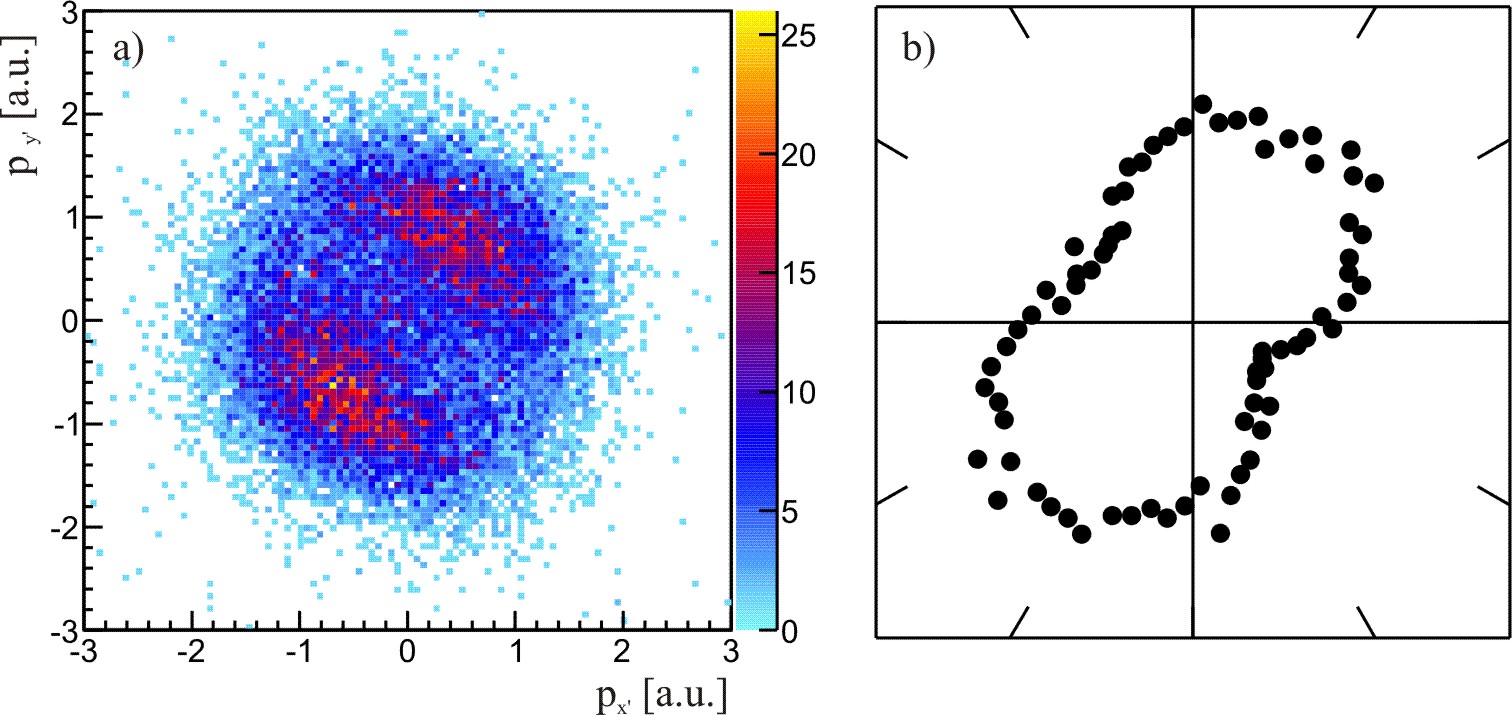Hydrogen molecular ions in strong laserfields
|
Using the offset velocity of an accelerated H2+ beam we are able to perform the world-wide first and only experiment measuring protons as well as electrons in reactions of H2+ with short laserpulses. In reactions with linear polarized laserpulses the well know dissociation channel H2++ nhν -> H + H+ shows a clear intensity dependent structure as seen in the center parts of Fig. 1, where the polarization axis is set along the x-direction. This is an indication for different processes leading to dissociation: At low intensities the dissociation occurs via the so called “Bond-Hardening”-process while higher intensities lead to “Bond-Softening”. Both processes arise from light induced coupling of the two lowest electronic states of H2+, but leading to a quite different angular distribution with respect to the polarisation axis.  Figure 1: Momentum distribution of protons originating from reactions of the hydrogen molecular ion with linear polarized laserpulses of a) less than 100 TW/cm2 and b) 500 TW/cm2. The inner parts show contributions of the dissociation channel, while the outer structure is due to ionization. Measuring the momenta of the electron as well as protons arising from ionization in circular polarized light enables the observation of the electron angular distribution with respect to the molecular axis as shown in Figure 2. The image reveals a rotation of the distribution called “Coulomb-Asymmetry”.  Figure 2: a) Electrondistribution in the polarization plane with respect to the molecular axis, which is orientated along the x-direction. b) Polarplot of the distribution in a).
Publications to this project: |